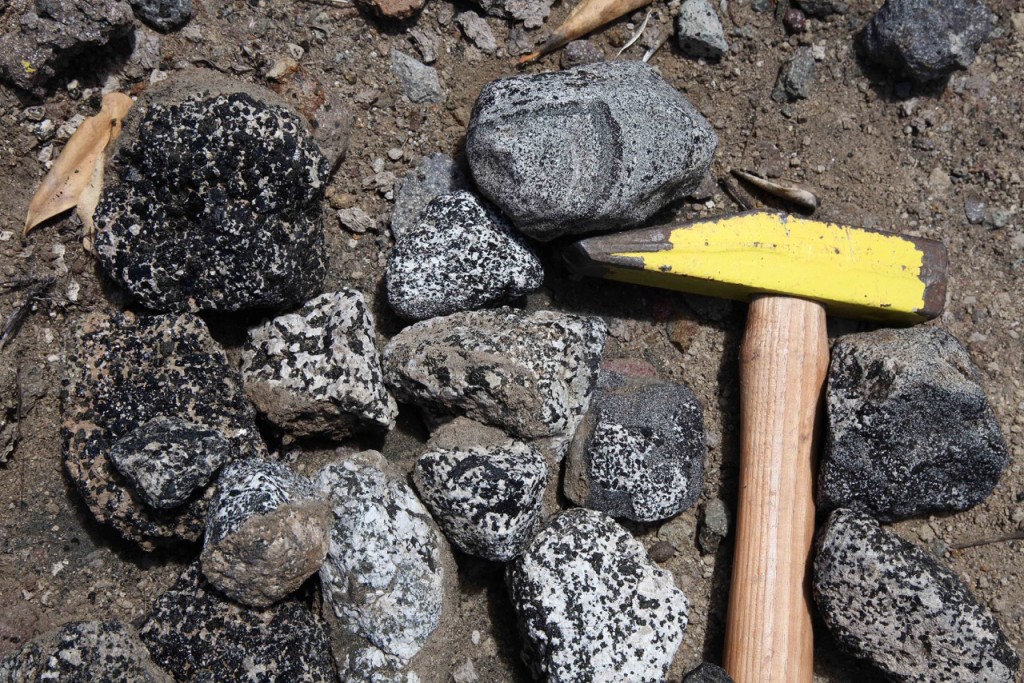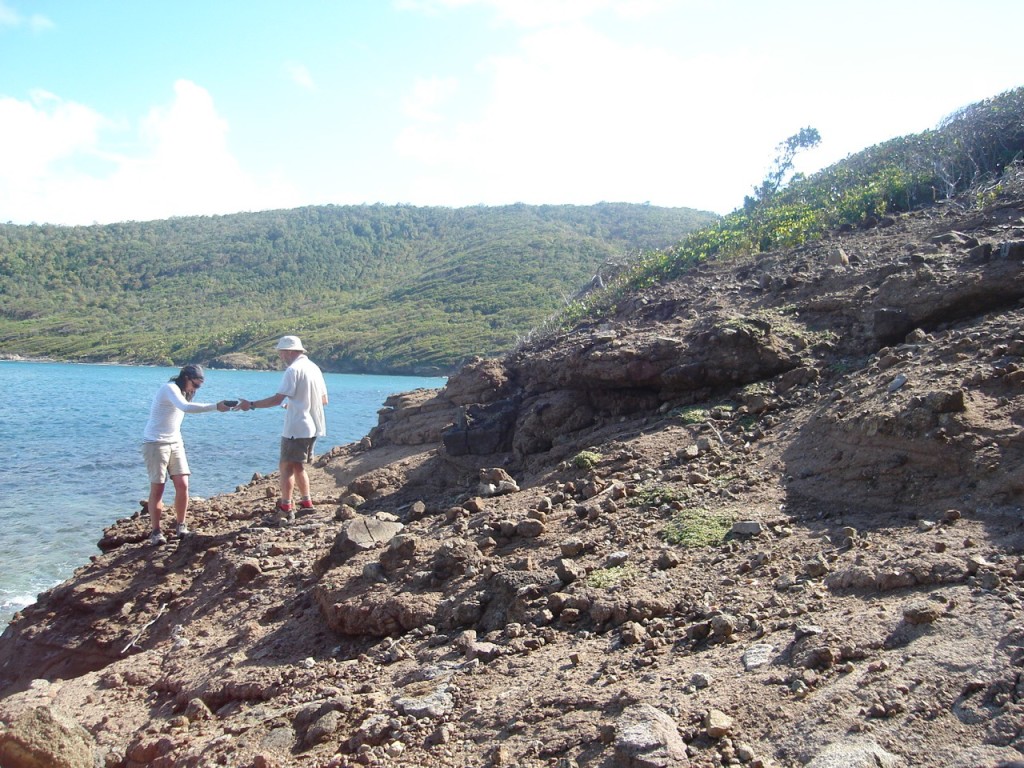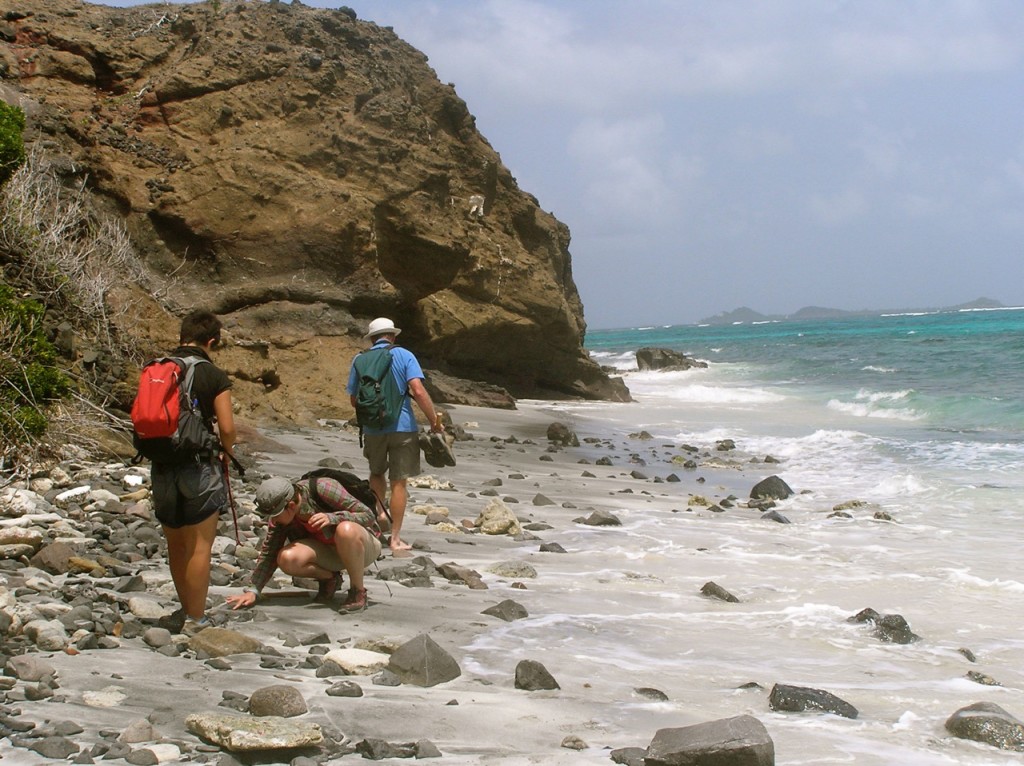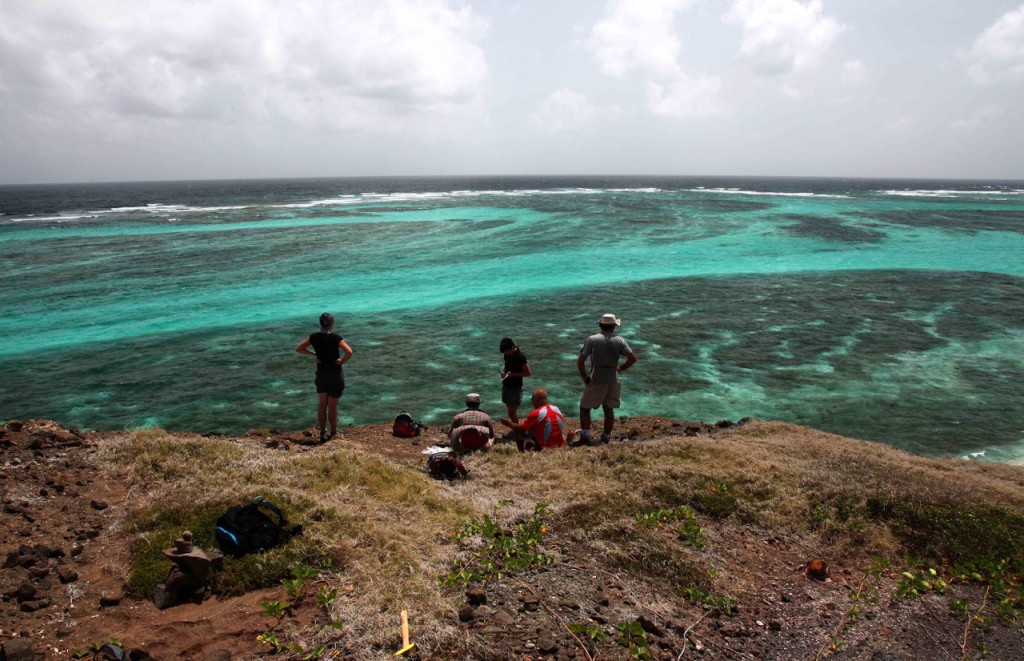Charly is an ex-experimental petrologist. She completed a PhD at the University of Bristol and now works in renewable energy and recycling. You can follow her on Twitter @C_Stamper and read more at http://betweenarock.co.uk
What makes a volcano go bang? The Grenadines, Lesser Antilles
The world’s most explosive and dangerous volcanoes are located at destructive plate boundaries. Here, dehydration of the subducting tectonic plate initiates partial melting of the overlying mantle wedge and produces magma (and hence, volcanoes). Lavas erupted from volcanoes at these locations chart a huge variety of evolved compositions, testifying to the influence of crystallisation at depth in modifying the chemistry of the primitive magmas originally produced by the melting.
From experiments, we know that the proportion of melt and solid in a cooling magma exhibit non-linear behaviour with respect to temperature, pressure, oxygen fugacity (fO2) and volatile content. Volcanologists are now considering whether a critical combination of conditions within a magma chamber results in an intense window of crystallisation, triggering a sudden explosive eruption: a tipping point analogous to the bursting of a slowly inflating balloon or a tap dripping into an overflowing bath. This hypothesis is testable using experimental petrology, but needs natural compositions to act as benchmarks.
And this is exactly why, in the spring of 2011, I found myself in the Lesser Antilles searching for a particular type of volcanic rock called a cumulate (sometimes also known as a plutonic xenolith). Put simply, cumulates are rocks formed from minerals concentrated through fractional crystallization. In contrast to phenocrysts in lavas, the high pressure phase assemblages within cumulates have an intrinsically greater preservation potential and are more likely to yield clues to the true history of the crystallising magma.
The Lesser Antilles island arc lies off the east margin of the central American coast, spanning approximately 750 km in length from the northernmost island of Saba to the southern extent of Grenada. The crescent of volcanic islands is the surface manifestation of the westwards subduction of the American tectonic plate underneath the Caribbean Plate.
Volcanism in the Lesser Antilles is hazardous and disruptive. Four volcanoes have recorded historical eruptions, and thirteen are known to have been active in the last 0.1 Ma, including the devastating eruption of Mt Pelée, Martinique in 1902, in which pyroclastic flows killed 30,000 people during the destruction of the town of St Pierre.
This particular field season focused on the Grenadines archipelago, a chain of over 600 volcanic islands located between the two larger landmasses of St Vincent and Grenada. The Grenadine islands are a diverse mixture of small communities, uninhabited jagged outcrops and privately-owned island paradises (the lack of public transport between islands forced us to hire a yacht to get around!).
Relatively little is known about the geology of the Grenadines and we were working off schematic maps produced by a team of French researchers in the 1980s. Armed only with these, we adopted an iterative approach to fieldwork, learning from experience where cumulates were most likely to be found. We expected the plutonic xenoliths to be exposed in reworked explosive deposits and in breccias and hyaloclastites, but in fact they are most commonly found in river gullies or beaches – their relatively hard-wearing nature means they often remain as solid blocks when the surrounding material around has been eroded away (see figs. 1 and 2).
The cumulates occur as rounded clasts 0.01 – 0.25 m in diameter and rarely, fragments of the host lava may be attached. Many of the blocks have a distinctive black and white speckled appearance (see fig. 3) where the white mineral is typically plagioclase feldspar; the dark phases commonly comprise olivine, clinopyroxene (augite and diopside), hornblende and spinel. Cumulates with a higher proportion of darker minerals were particularly high on our list as they represent the earlier (and deeper) part of crystallization; however, being dark makes them harder to find and led to some scenes that at times resembled a crazed Easter Egg hunt!

Fig. 3: A representative selection of cumulate blocks from the island of Carriacou, Grenada. A variety of textures, layering and mineral proportions are on show. The white mineral is typically plagioclase feldspar; the dark phases are clinopyroxene, hornblende and spinel.
We ended the trip with a haul of over 200kg of cumulate blocks, which were delivered safely back to the UK on a cargo ship full of bananas and have since been the subject of fevered research (fig. 4). To date, these samples have shown that variability in cumulate mineral phases and their composition is present between even neighbouring islands. Whether this is related to temporal or spatial factors is as yet undetermined, and is just one of the exciting questions to come out of this fieldwork.

Fig. 4: Thin section photomicrograph of a hornblende gabbro collected from Grenada; field of view shows poikilitic horblende with inclusions of olivine, cpx and spinel.
This fieldwork was funded by the ERC funded grant CRITMAG – more information on related research can be found here.
![]() This work is licensed under a Creative Commons Attribution-NonCommercial-ShareAlike 4.0 International License.
This work is licensed under a Creative Commons Attribution-NonCommercial-ShareAlike 4.0 International License.



